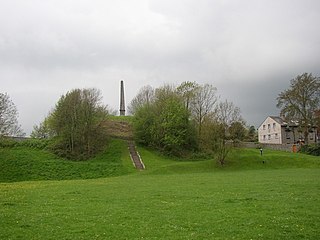
Westmorland is a historic county in north west England. It formed an administrative county between 1889 and 1974, after which the whole county was administered by the new administrative county of Cumbria. In 2013, the Secretary of State for Communities and Local Government, Eric Pickles, formally recognised and acknowledged the continued existence of England's 39 historic counties, including Westmorland.

Cumberland is a historic county of North West England that had an administrative function from the 12th century until 1974. It was bordered by Northumberland to the east, County Durham to the southeast, Westmorland and Lancashire to the south, and the Scottish counties of Dumfriesshire and Roxburghshire to the north. It formed an administrative county from 1889 to 1974 and now forms part of Cumbria.

Appleby-in-Westmorland is a market town and civil parish in the Eden district, in the administrative county of Cumbria, in North West England. The parish had a population of 3,048 in 2011. It lies in a loop of the River Eden in the historic county of Westmorland, of which it was the county town. Its name was simply Appleby until the local government changes of 1974.
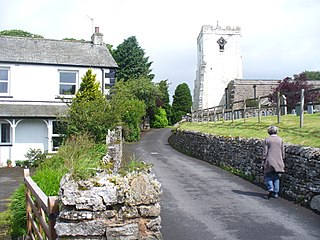
Orton is a village and civil parish in Cumbria, England. It lies 15 miles (24 km) south of Penrith, Cumbria, 8 miles (13 km) from Appleby-in-Westmorland and 1.5 miles (2.4 km) from the M6 motorway. It is in the upper Lune Valley and set at the foot of Orton Scar in the Orton Fells. The Lake District is nearby. A few miles over Orton Scar is the Eden valley. Historically the parish was part of the county of Westmorland. It is now in the Eden District of Cumbria.

St Bees is a coastal village, civil parish and electoral ward in the Copeland district of Cumbria, England, on the Irish Sea. It was originally in the historic county of Cumberland.
The Barony of Westmorland, originally often written as Westmarieland or Westmaringaland, was one of two baronies making up the English county of Westmorland, the other being the Barony of Kendal. Geographically, the barony covered the northern part of the county of the same name, and was divided into two wards — East ward and West ward. It covered an area similar to that of the Eden District of Cumbria, although it did not include Penrith, which is now the administrative capital of the district.
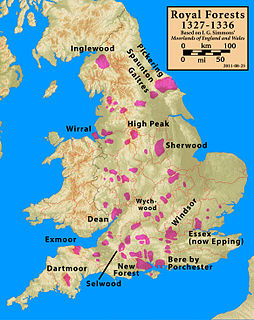
Inglewood Forest is a large tract of mainly arable and dairy farm land with a few small woodland areas between Carlisle and Penrith in the English non-metropolitan county of Cumbria or ancient county of Cumberland.

The River Glenderamackin, the Glendermackin or Glendermackin Beck is a watercourse in Cumbria, England. It is a headstream of the Greta.

Kendal Castle is a medieval fortification to the east of the town of Kendal, Cumbria, in northern England. The castle, which is atop a glacial drumlin, was built in the 12th century as the Caput baroniae for the Barony of Kendal. By the 15th century, the Parr family owned the castle.

Stainmore is a remote geographic area in the Pennines on the border of Cumbria, County Durham and North Yorkshire. The name is used for a civil parish in the Eden District of Cumbria, England, including the villages of North Stainmore and South Stainmore. The parish had a population of 253 in the 2001 census, increasing to 264 at the Census 2011. Stainmore Forest stretches further east into County Durham, towards Bowes.

Cliburn is a village and civil parish in the Eden district of Cumbria, England. The civil parish includes the hamlet of Town Head. In 2001 the population was 204, increasing to 274 at the 2011 Census.
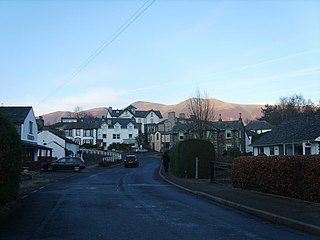
Portinscale is a village in Cumbria, England, close to the western shore of Derwentwater in the Lake District National Park 1.5 miles (2.4 km) from Keswick.
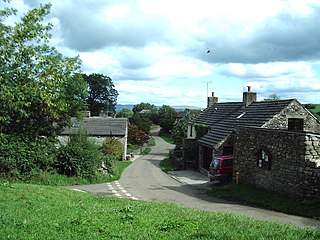
Waitby is a small village and civil parish in the Eden district of Cumbria, England. The parish contains two small villages, Waitby and Smardale, plus the small hamlets of Riddlesay, Stripes and Leases, all of which are in the farmed and enclosured northern part at an elevation of around 200–300m. The southern half of the parish is mostly heath and unused for agriculture, it rises to Smardale fell; which it includes, at elevations between 300 and 400m. The civil parish of Ravenstonedale forms the boundary to the south. The western border with Crosby Garrett civil parish is formed by Scandal Beck. To the north and east lie Soulby and Kirkby Stephen civil parishes respectively. The population of the civil parish as measured at the 2011 Census was less than 100. Details are included in the parish of Crosby Garrett.
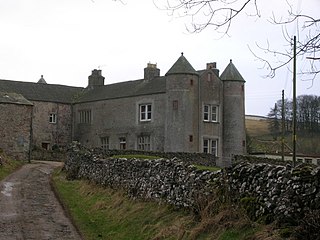
Smardale is a small village in Cumbria, England, in the civil parish of Waitby.
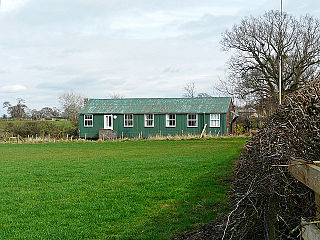
Cumdivock is a hamlet in Cumbria, England. Ian Caruana unearthed several 17th-century Tyneside clay pipes at Cumdivock.
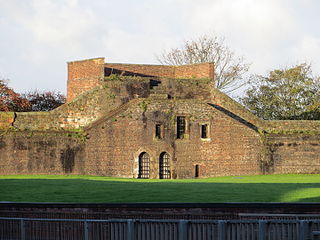
Carlisle city walls were a defensive structure surrounding the centre of Carlisle, Cumbria. The city walls ran from Carlisle Castle in the north-west of the city to The Citadel in the south-east. Between these points, the city was protected by the former North and East Walls and the West Walls which remain largely intact. The line of the walls can still be followed with the exception of the southernmost end of the West Wall which has been built over. The perimeter, including the castle, is approximately 2.2 kilometres (1.4 mi) which is comparable to Southampton town walls but less than Chester city walls.
The Cumberland and Westmorland Antiquarian and Archaeological Society, founded in 1866, is a local historical, antiquarian, archaeological and text publication society and registered charity covering the modern county of Cumbria.

John Christian Curwen, born John Christian was an English Member of Parliament and High Sheriff.
Birkbeck Fells is a township located in part of the parishes of Crosby Ravensworth, Orton and Shap in the historic county of Westmorland. It is a large mountinous district, and was described in the mid nineteenth century as containing around thirty scattered houses.



